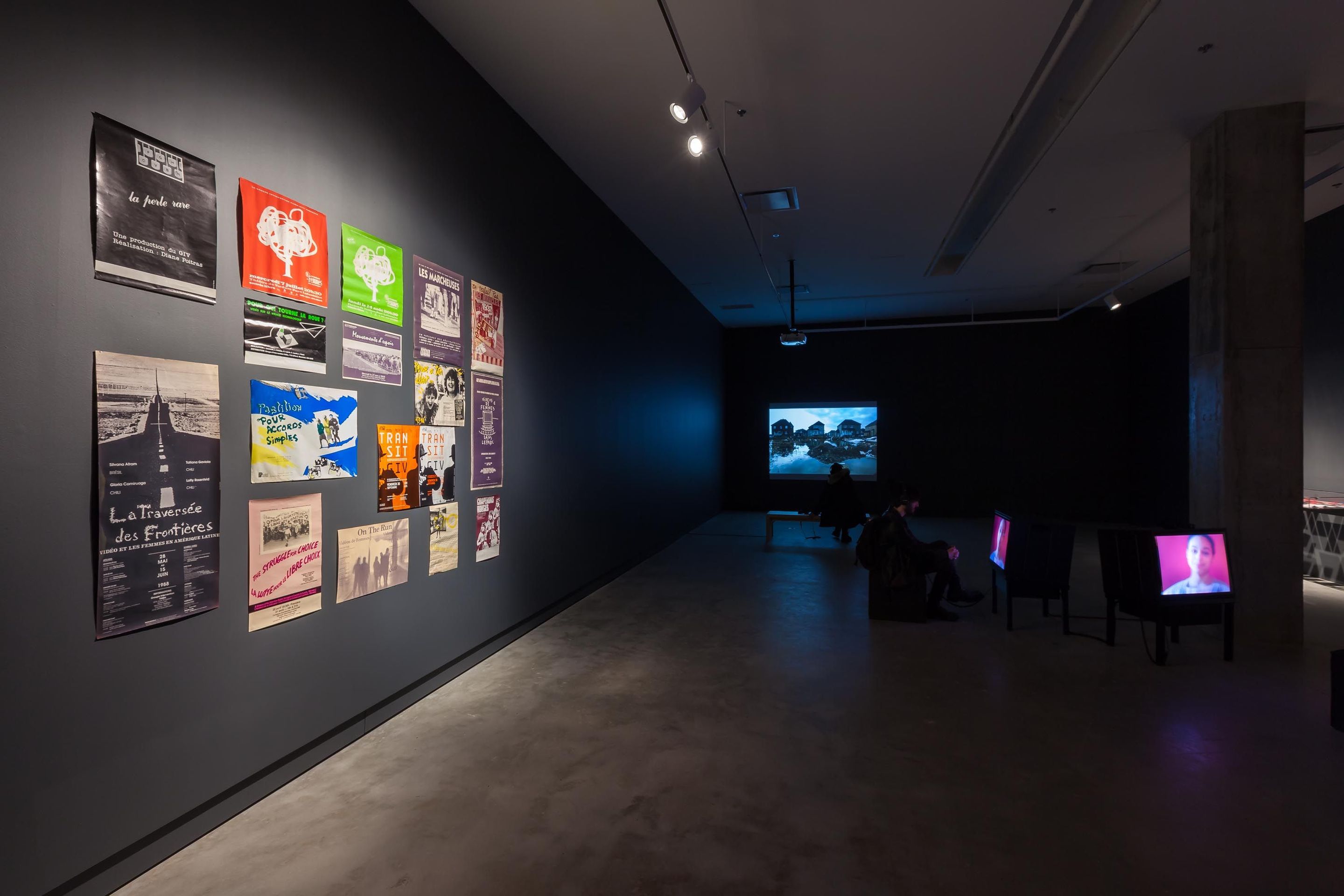
Faire des histoires
2015.02.28 - 03.28
A project initiated by Nicole Gingras, presented as part of the 33rd International Film Festival of Films on Art (Media Arts section / Experimental FIFA). A partnership between VOX,
GIV, and FIFA.
Faire des histoires, a project initiated by Nicole Gingras, consists of three exhibitions held as part of the Experimental FIFA, Media Arts section of the 33rd International Festival of Films on Art (FIFA). The projects are all related to memory: in terms of perception, story-making, or archiving.
The event includes two solo shows, curated by Nicole Gingras,
of the work of Nikki Forrest and Kim Kielhofner, along with a third exhibition celebrating the 40th anniversary of Groupe Intervention Vidéo (GIV), curated by Petunia Alves and Anne Golden.
Moving through history
Reading, translation, traces
NICOLE GINGRAS
Three exhibitions are presented under the title FAIRE DES HISTOIRES. At first glance, what they have in common is the moving image and a means of expression: video. There is also a focus on listening, suggesting that visitors should not only be eyes, but ears moving through the space. Video shows itself in an intimate, privileged relationship that it seems to demand of the spectator-listener. Video makes [hi]stories; video reinvents cinema.
Imagery drawn from cinema forms the core of the installation
A Spot on the Sun/Smotyn Ar Yr Haul/Une tache sur le soleil by Kim Kielhofner, in which she strives to piece together from memory the film Sans soleil by Chris Marker. The artist seeks, attempts to remember, associates, invents; she remakes a story and unravels it like a spiral. Spaces succeed each other and become familiar. A recurring female figure traverses them; other female characters are associated with her. Borne by three storylines transmitted by three female narrators in English, Welsh and French, in which translation feeds the process of remembering, the installation deploys a multiplicity of fragments that, after a few minutes’ observation, absorb Sans soleil. Over time, Kielhofner has constructed a substantial bank of images, weaving them together with formal, conceptual or affective links specific to her.1 The notion of the atlas as associative principle essential to a collecting reflex is essential here, revealing the movements of a way of thinking founded on a specific mode of reading—a concept that I have borrowed from Georges Didi‑Huberman: “There would be two meanings, then, two purposes of reading: a denotative meaning; i.e., a search for messages, and a connotative, imaginative meaning, i.e., a search for montages. The dictionary affords us an invaluable tool for the first of these quests; the atlas certainly provides us with an unexpected apparatus for the second.”2
Nikki Forrest, for her part, anchors her practice in an installation form that is separate from narrative, favouring seemingly abstract elements: shimmerings of light and shadow, sounds that unveil textures and sonorities, discreet marks on paper. Pictures for Listening observes and captures the imperceptible, plunging the visitor into an ebb and flow between sound and image and providing a space for active listening in which space-time referents dissolve.3 The work was created using a camera with a myopic gaze. As the artist explains: “Video images were generated using a DSLR camera’s light sensor to record the light present at a particular time and place; the lens was detached so the camera could not ‘see’ in the usual way. Sound recorded with the images was processed, edited and re-mixed to produce the soundtrack.”4 Facing the video projection hang several drawings: Forrest, with eyes closed and wearing headphones, transposed onto paper the textures and rhythms of the soundtrack, which she listened to while drawing. She sought to translate fleeting perceptions, investigating the image-potential of sounds and the sound-potential of images. In that interplay, she proposes a context and reveals a process, a transformation of spatial perception, in the end conveying an experience that—in spite of that degree of abstraction or because of it—is deeply rooted in her memory.
Making [hi]stories is also about resistance: speaking, showing and doing differently. GIV has been engaged in that alternative approach for the past 40 years. GIV le 40e invites visitors to explore a space comprising a history of video art, to stroll through the memory bank of a collection. Headsets are provided so that they may initiate a personal relationship with each work. Not spectacle, but experience. Not demonstration, but discovery. Spectacle takes a back seat to interrogations, testimonials, shared experiences and searches among the artists represented. For GIV, memory is inscribed in and through the act of recording, capturing and disseminating images and sounds. For Nikki Forrest, it is “[m]emory as a space, a colour field; space, screen—more of a window than a screen.”5 For Kim Kielhofner, memory is a space of transformation where linearity does not exist: “In the absence of detail I rely on a story I am familiar with, a story which tries to recreate itself.”6 Video remembers and writes itself in the present tense.